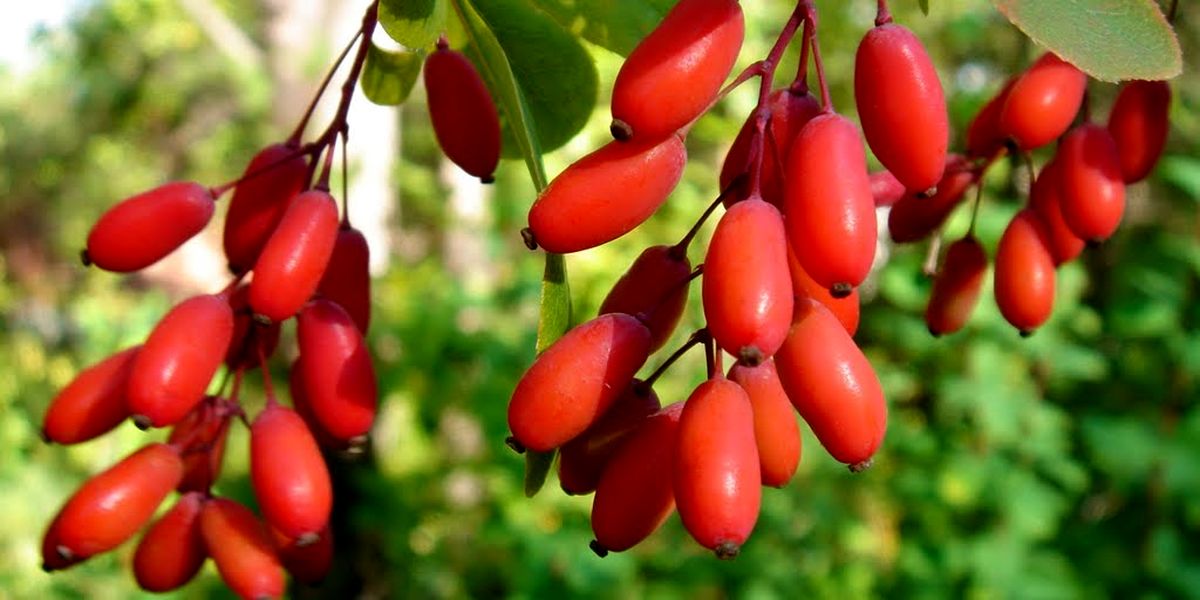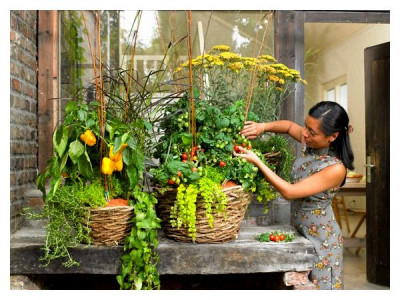Strawberries, honeysuckle, cherries, wild strawberries, blueberries, currants - with what impatience, missing the benefits and taste, we wait for the very first fresh berries of the season! Already the first summer month pleases us with an abundance of these small juicy fruits, and some berries ripen even in May.
But the end of the season is also a rich «berry» time. And it is still unclear when the berries are more valuable - during spring vitamin deficiency or on the eve of winter, when the body vitally needs to stock up on valuable vitamins and microelements!
In addition, many berry bushes are a real decoration of the garden plot. Remember the «flaming» crowns of rowan trees, heavy bunches of transparent multi-colored grapes, sea buckthorn branches densely «covered» with orange berries, scarlet scattering of cranberries and lingonberries literally underfoot...
To your attention - the top 11 berry bushes that look spectacular at the end of the season and will not be short of harvest.
Grapes

Of course, now you can buy grapes in the store all year round, but seasonal ones are tastier, healthier, and more varied. The first fruits of this crop, depending on the variety, are obtained from the beginning of August, but the main season falls in September.
Thanks to the efforts of breeders, among the proven winter-hardy zoned varieties, in the middle zone suitable even for growing in an uncovered form, you will find berries for every taste and color.
Sea buckthorn

Sea buckthorn harvesting starts in late August (and for some varieties even in the second half of September). Its shiny golden or red-orange sweet and sour fruits are a real multivitamin concentrate (A, B1, B2, B3, B6, C, E, K, etc.), and also contain oil rich in carotenoids, valuable microelements, phytoncides and organic acids. And how elegant the tree branches look, literally strewn with bright berries!
Rosehip

Red, yellow or black rosehip fruits of different species and varieties ripen in August-September, or even in September-October. Polynuts (as the berries of this crop are correctly called) contain an exceptionally large amount of vitamin C (40-50 times more than in lemon!), other vitamins, flavonoids, carotenoids, pectins, organic acids, macro- and microelements - which is why they are valuable medicinal raw materials in both official and folk medicine.
Rose hips have a general strengthening effect, stimulate the body's resistance to harmful effects, accelerate tissue regeneration, reduce vascular permeability, have a positive effect on carbohydrate and mineral metabolism, and have anti-inflammatory properties.
Rowan

The fruits of many varieties of rowan, collected in spectacular clusters, are quite edible and tasty, not to mention the fact that they (like the leaves) come in a wide variety of colors, and therefore are a real decoration of the autumn garden. Even when the leaves have completely fallen off, colorful berries remain hanging on the branches, which do not fall off even under the weight of snow and attract a lot of birds to the area.
By the way, fresh rowan berries are often bitter in taste, but it is the first frosts that lead to the destruction of the bitter glycoside of sorbic acid and the bitterness disappears.
Aronia

The cultivated chokeberry is popularly called black chokeberry, or black chokeberry. It is also actively grown in garden plots as an ornamental, honey-bearing, food and medicinal deciduous shrub.
The chokeberry fruits, which ripen in September, are black, with a matte surface, juicy, sour-sweet taste with an astringent tart flavor, berries rich in vitamins (especially P, E and C), antioxidants and a large set of microelements (iodine compounds are especially important in the composition, as well as boron and fluorine). The fruits are harvested until mid-October.
Viburnum

The juicy fruits of red (common) viburnum are widely used not only in cooking, but also very widely - in folk medicine and pharmacology, because they have a unique multivitamin and microelement composition, helping with many ailments.
Viburnum berries ripen in September-October and, like rowan berries, at first they have a distinct bitter astringent taste that disappears after the onset of cold weather. And the coral-red fruits of viburnum decorate trees not only in the fall, but also all winter, without falling off even after severe frosts (unless, of course, they become a delicacy for birds).
Hawthorn

Hawthorn will also become a garden decoration in late autumn and winter - its berries also stay on the branches even under the snow. The plant is valuable in the garden not only as an unpretentious hedge and a beautifully flowering honey plant, but also as a fruit food and medicinal crop.
The berries of the hawthorn variety (and they can be pale orange-yellow, red, bright orange, even almost black) have a pleasant refreshing taste, are juicy and fleshy, and products made from them help people with cardiovascular diseases, lower cholesterol levels, and support the body in the fight against chronic fatigue and stress.
Dogwood

Dogwood is used in gardens mainly as an undemanding early-flowering highly ornamental plant, which is perfect for building hedges. However, the fruits of many dogwood species (there are about 60 of them) are juicy, have a pleasant smell, are sweet and sour, tart, slightly astringent, and are widely used in cooking.
And not only that - the biologically active components of the berries (there is especially a lot of vitamin C) normalize blood pressure, prevent sclerosis, and therefore dogwood is used as a general tonic, tonic, anti-inflammatory and antipyretic agent, as well as for diseases of the gastrointestinal tract.
Barberry

The berries of not all species of this shrub are edible - only the fruits of common, Amur, Canadian and spherical barberries can be eaten. But their sour fruits are suitable for making candied fruits, jam, drinks, side dishes for meat, additives to soup and salad.
And when eaten, barberry berries reduce blood pressure and blood sugar levels, have a strengthening effect on the immune system, improve the health of the liver, kidneys, and stomach. The fruits also have a choleretic and antiviral effect, relieve fever and speed up recovery from colds.
Lingonberry

The «classic» autumn berry, lingonberry, has been used by humans in cooking and medicine for hundreds and hundreds of years - after all, it is truly a storehouse of useful substances. This sweet and sour juicy berry contains vitamins, easily digestible sugars, organic acids, microelements (for example, quite a lot of potassium), polyphenols...
Thanks to such a rich composition, lingonberry fruits help with vitamin deficiencies, promote the strength and elasticity of capillaries, reduce the risk of heart disease, and increase the level of good cholesterol in the blood. In addition, it is an excellent vitamin and anti-putrefactive agent.
Cranberry

A «relative» of lingonberry, cranberry, ripens even later and is just as valuable for nutrition and health of the body - a rich set of useful microelements, sugars, organic acids, pectin substances and vitamins. Cranberry juice and fruit drink are a well-known effective remedy against colds.
And these berries, when consumed regularly, help with high blood pressure and low stomach acidity, stimulate the intestines and even prevent the formation of caries.
As you can see, berry bushes in the autumn garden are very bright and beautiful, and also tasty and healthy!









